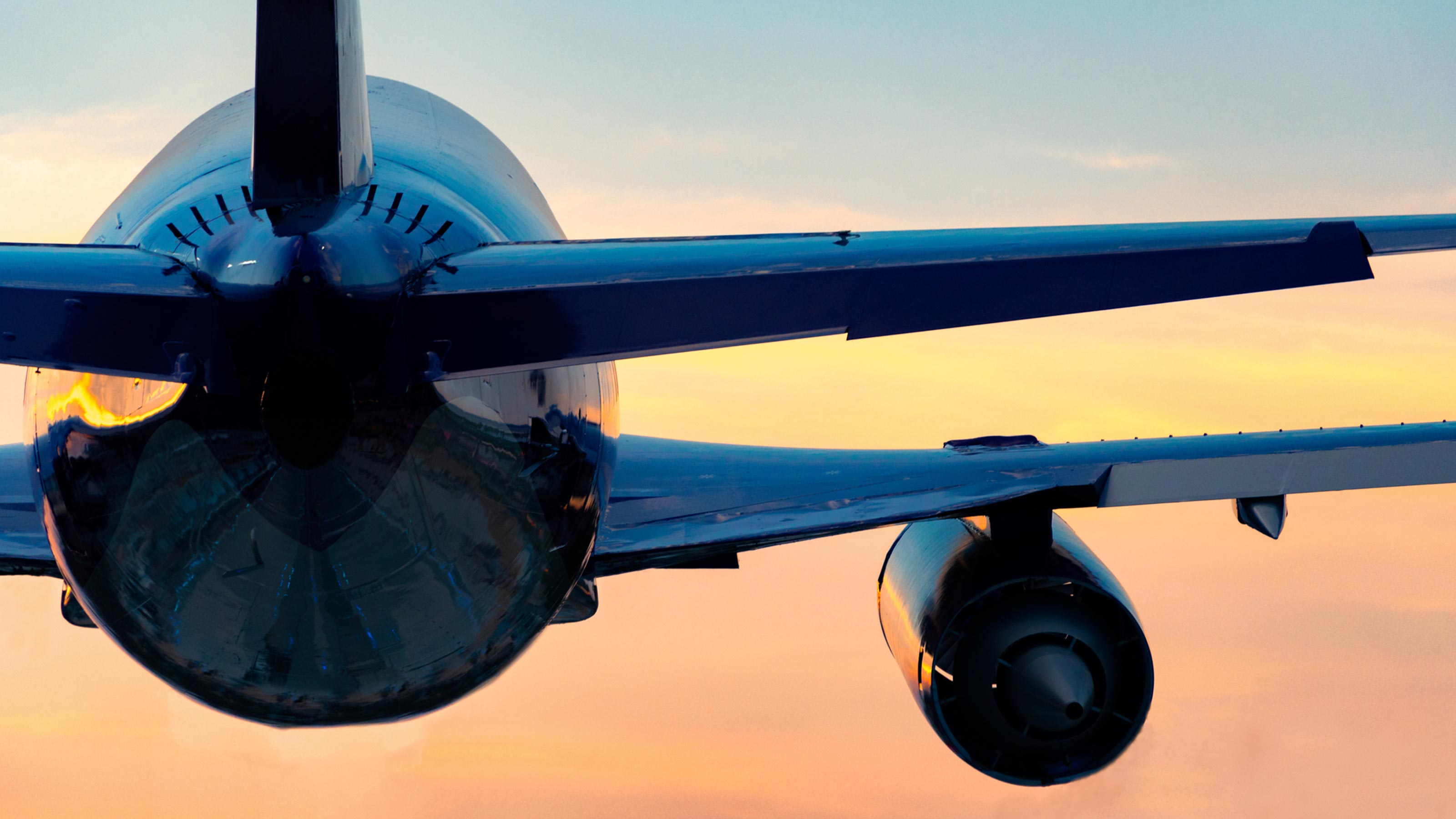Airline Industry Set for COVID Comeback, But It Will Be a Slow Climb
The Kiplinger Letter forecasts leisure travel will soar past business travel, but air travel demand won't reach pre-pandemic levels until as late as 2024.


After taking a drubbing from the pandemic, aviation will stage a comeback in 2021.
But despite a number of tailwinds, including many effective vaccines for COVID-19 and significant, pent-up demand for air travel, the road to recovery will be a long one.
The outlook for global air travel demand won't reach pre-COVID levels until 2022 at the earliest, and maybe not until 2023 or 2024, after registering a decline of more than 60% in 2020. U.S. air travel volumes are still half normal levels and aren’t expected to pick up until later in 2021.
From just $107.88 $24.99 for Kiplinger Personal Finance
Become a smarter, better informed investor. Subscribe from just $107.88 $24.99, plus get up to 4 Special Issues

Sign up for Kiplinger’s Free Newsletters
Profit and prosper with the best of expert advice on investing, taxes, retirement, personal finance and more - straight to your e-mail.
Profit and prosper with the best of expert advice - straight to your e-mail.
The recovery will be uneven, with demand for domestic air travel soaring as the pandemic wanes in certain countries. International travel, by contrast, will be much slower to recover, given various restrictions on cross-border movement. Likewise, leisure travel will outpace business travel.
The vacation industry should thrive as the vaccines allow people to venture out more. Surveys show that people are pining to go on vacation again and plan to do it this year — welcome news for airlines, hotels and other businesses that cater to travelers. Also, a boost for places that rely heavily on tourism: Fla., Hawaii, Las Vegas, etc. And, to a lesser degree, New York City. International travel figures to be down, and New York is a must-see for foreign visitors.
Airline budgets will likely be squeezed for many years to come. Worldwide, the industry took on over $200 billion in debt last year.
That’s bad news for aircraft manufacturers, such as Airbus and Boeing, who also saw many of their cash-strapped customers cancel orders last year.
Combined, the two companies expect to deliver roughly 1,100 jets in 2021, up from 723 in 2020, but below the 1,583 aircraft delivered to customers in 2018.
Boeing in particular stands to gain from the return of the 737 Max after two deadly crashes that grounded the plane for the majority of 2019 and 2020 and caused the company to lose market share to Airbus. Experts say Boeing needs to get its act together now to stay competitive with its European rival in the long run.
But the pace of new orders will likely be slow, especially for twin-aisle jets that are used for international flights, such as Boeing’s 777 and 787 Dreamliner.
Companies further up the supply chain are also struggling. GE Aviation, a leading manufacturer of jet engines, laid off at least 25% of its workforce in 2020. Spirit AeroSystems, which builds aircraft structures, also shed jobs last year.
One bright spot: Air cargo demand, which will return to prepandemic levels in the first quarter of 2021. While many passenger airlines are shrinking their fleets, cargo carriers are adding capacity to keep up with the huge increase in e-commerce.
Bottom line: The industry’s future will likely be one of slower growth. Over the next two decades, air travel demand is expected to grow by roughly 4.0% per year, down from an average of 5.3% per year in the 20 years preceding COVID-19.
Note that civil aviation accounts for 5% of U.S. GDP, and aviation equipment is one of America’s top exports. In 2016, the industry generated close to $2 trillion in economic activity and supported 11 million jobs with $488 billion in earnings.
Profit and prosper with the best of Kiplinger's advice on investing, taxes, retirement, personal finance and much more. Delivered daily. Enter your email in the box and click Sign Me Up.

-
 The Stoic Retirement: Ancient Wisdom for Today's Reality
The Stoic Retirement: Ancient Wisdom for Today's RealityA "Stoic retirement" doesn't mean depriving yourself. It's a character-based approach to life and aging that can bring calm and clarity.
-
 My Teen Crashed His Car and Now Our Insurance Has Tripled. What Now?
My Teen Crashed His Car and Now Our Insurance Has Tripled. What Now?Dealing with the costly aftermath of a teen car accident is stressful. Here are your options for navigating it.
-
 11 Outrageous Ways To Spend Money in Retirement
11 Outrageous Ways To Spend Money in RetirementWhether you have excess cash to spend or want to pretend, here’s a look at 11 ridiculous ways retirees can splurge.
-
 Why It's Worth Booking a Winter Vacation
Why It's Worth Booking a Winter VacationTravel Smart In the early months of the year, travel demand dips — and so do prices.
-
 5 Ways to Save on a Trip to the 2026 Olympics in Italy
5 Ways to Save on a Trip to the 2026 Olympics in ItalyA guide to going to the Milan-Cortina 2026 Winter Olympics without breaking the bank.
-
 The Best (and Worst) Airlines for Flight Delays and Cancellations
The Best (and Worst) Airlines for Flight Delays and CancellationsWhich airlines should you book and which should you avoid if you want to make it to your destination on time?
-
 Four Luxury Spa Resorts for Well-Heeled Travelers
Four Luxury Spa Resorts for Well-Heeled TravelersWe hand-picked these U.S. luxury spa resorts for their serenity, amenities and dedication to the comfort of older travelers.
-
 Child-Free Cruises Perfect For Your Retirement Celebration
Child-Free Cruises Perfect For Your Retirement CelebrationHow to find a bespoke ocean or river vacation for adults. Many of these options are smaller, charming river cruises, expeditions, or niche experiences.
-
 Noctourism: The New Travel Trend For Your Next Trip
Noctourism: The New Travel Trend For Your Next Trip"Noctourism" is a new trend of building travel and vacations around events and plans that take place at night. Take a look at some inspiring noctourism ideas.
-
 My Husband and I Retired at 67 With $3.2 Million, But He's Frugal About Travel. How Can I Convince Him to Loosen Up?
My Husband and I Retired at 67 With $3.2 Million, But He's Frugal About Travel. How Can I Convince Him to Loosen Up?We asked financial planning experts for advice.
-
 Cruise Lines Sue to Block Hawaii’s New Climate Tourism Tax
Cruise Lines Sue to Block Hawaii’s New Climate Tourism TaxState Tax Your vacation to the Aloha State could come at a higher price tag next year. Here’s why.